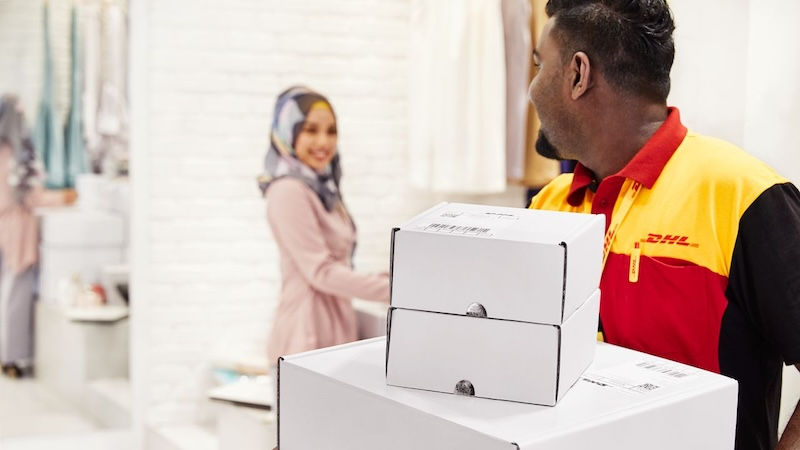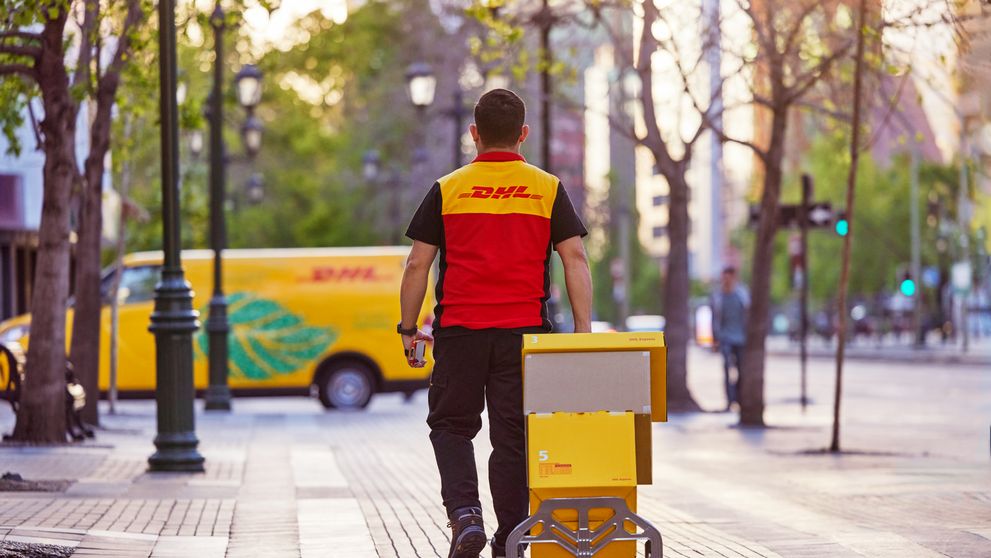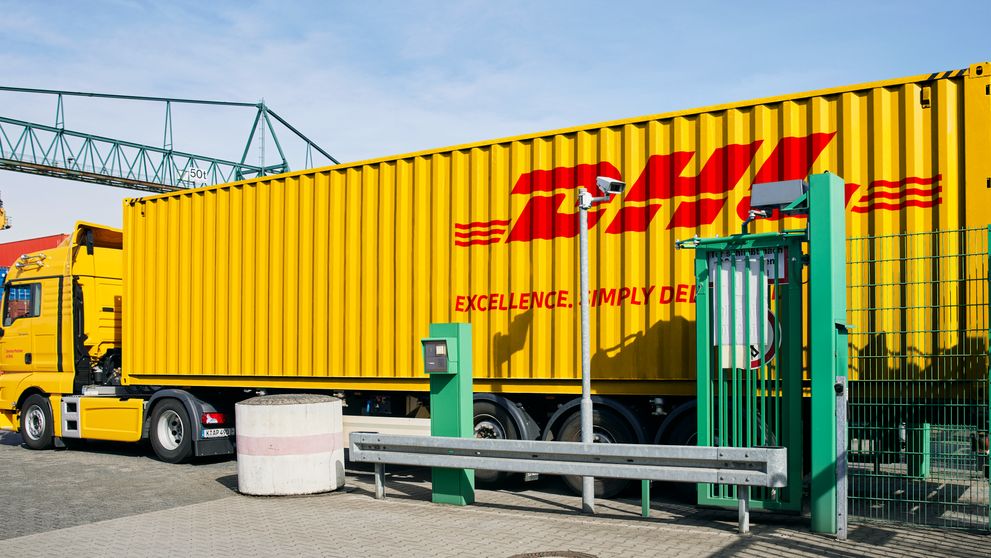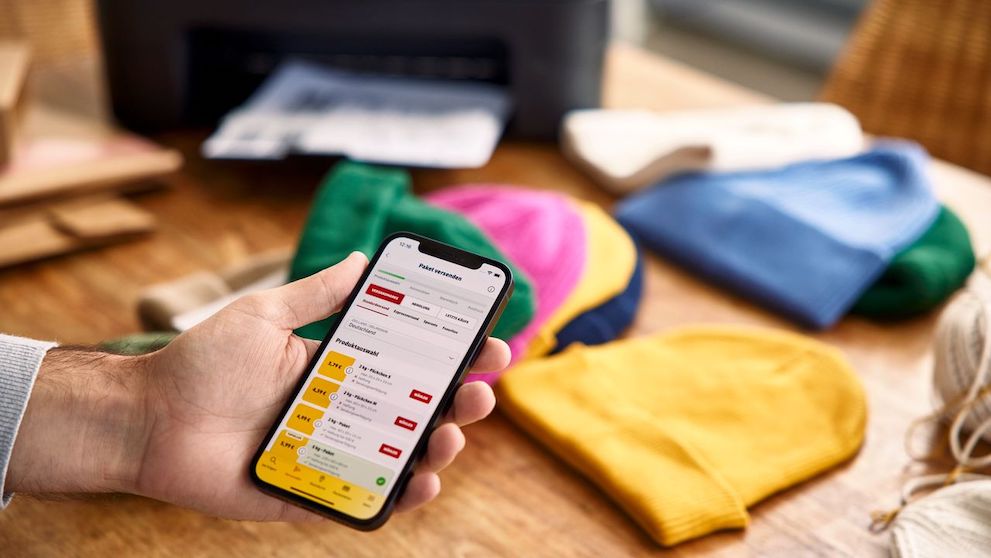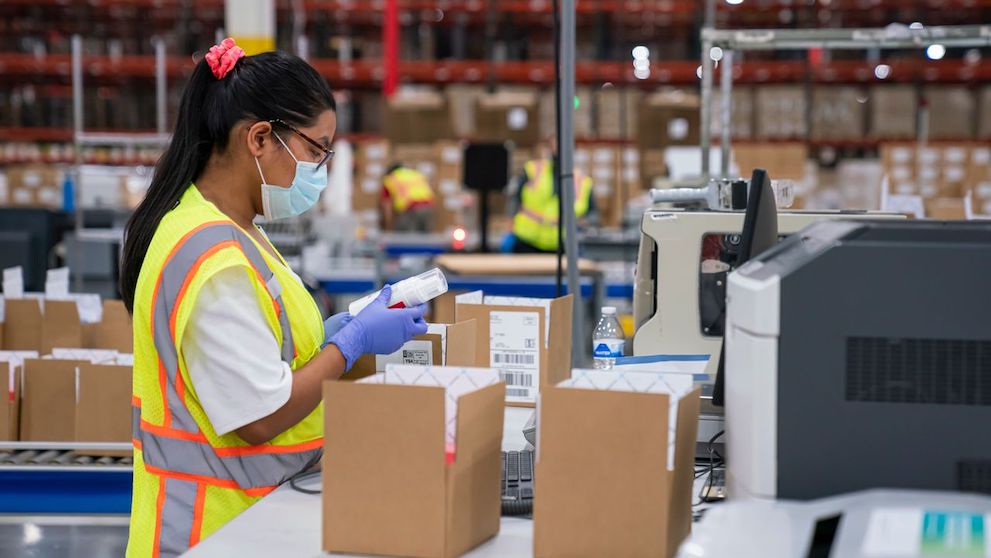Online marketplaces can connect your e-commerce business in Indonesia with millions of buyers internationally. But which is the right one for you?
Before creating an account and starting selling online, it’s essential to consider which platform would be suitable for the type of products you are selling. To help your e-commerce business in Indonesia determine the best platform to use, we give you a list of the top e-commerce marketplaces for your business expansion, along with their pros and cons. That way, you can make an informed decision on where you should be selling your products.

Amazon
In 2023, Amazon was considered one of the most popular and valuable e-commerce brands worldwide, according to Statista. This platform has revolutionised the retail landscape, providing customers and sellers unprecedented access to various products and services online.
According to the World Population Review, countries with the most Amazon users include the United States, India, Canada, and the United Kingdom. Therefore, if you're looking to sell products in any of these key regions, leveraging Amazon's extensive user base and robust distribution network could be an effective strategy to kickstart your sales and increase your market reach.
Pros
- Amazon’s global reach ensures that your products are visible to a vast audience, which can potentially increase your sales potential.
- Due to the platform’s established reputation for reliability and customer service, it can lend credibility to your business, encouraging more customers to buy from you.
- Amazon supports a wide range of categories and products, making it an ideal platform for selling almost anything.
- Operating in multiple marketplaces worldwide, Amazon allows sellers to easily expand into international markets without having to set up separate supply chains in each country. The company’s global infrastructure supports seamless cross-border e-commerce transactions.
Cons
- Due to the sheer volume of sellers and products on Amazon, it can be challenging to stand out and attract attention to your brand.
- Amazon charges various fees, including listing fees, selling fees, and additional charges for FBA, which can cut into profit margins.
- Selling on Amazon can limit your ability to build and promote your own brand, as customer interactions and packaging are standardised under Amazon’s guidelines.
- Relying heavily on Amazon can be risky; changes in policies or fee structures can significantly affect your business operations and profitability.
How to get started with Amazon
To begin selling on Amazon, follow these step-by-step instructions to set up your seller account and start listing your products:
- Visit Amazon's official website and choose between an Individual or Professional seller account. An Individual account is suitable for sellers planning to sell fewer than 40 items per month, whereas a Professional account is recommended for higher volumes.
- Provide your business name, legal information, and tax identification details. Make sure to have digital copies of your business license and tax information ready for verification.
- Link a bank account where Amazon can send your sales proceeds.
- You can list your products one at a time or in bulk using Amazon's tools. Provide detailed product descriptions, high-quality images, and relevant keywords to improve visibility.
- Decide whether you will handle shipping yourself through Fulfillment by Merchant or use Fulfillment by Amazon, where Amazon takes care of storage, packing, and shipping.
- Use SEO techniques to optimize your product listings. Focus on keywords, high-quality images, and detailed product features. Engage in Amazon's advertising tools to increase visibility.
Logistics arrangements
Handling logistics on Amazon can be managed through two primary methods: Fulfillment by Amazon (FBA) and Fulfillment by Merchant (FBM).
With Fulfillment by Amazon (FBA), you only have to send your products to Amazon’s fulfillment centres. They can handle the storage, packaging, shipping, customer service, and returns for your products. FBA can help scale your business and reach more customers with Prime eligibility. On the other hand, if you choose Fulfillment by Merchant (FBM), you will essentially be in control of storing, packaging, and shipping your products directly to customers. FBM gives you more control over your inventory and can be less costly if you already have established logistics processes.
Shipping to the US and India, which is a major market for Amazon, can be a complicated process, especially for first-timers. To help guide you on your cross-border business expansion, here are our guidelines on how to export to the US and how to export products to India.

Alibabe / Tmall Global
Alibaba Group is another major player in the e-commerce space, with their own retail properties taking up almost a quarter of the global market, as per Statista. It’s also the top company in terms of gross merchandise volume across the web, amounting to 23% of overall online GMV. One of its subsidiaries, Tmall Global, is one of the largest e-commerce marketplaces in China. So, if your business is aiming to tap into the expansive Chinese market, Tmall Global offers a strategic entry point, providing direct access to a vast consumer base eager for international products.
Pros
- Tmall Global simplifies the complexities of entering the Chinese market by offering an e-commerce platform where you don’t have to go through the process of obtaining a local business license.
- By being a part of Alibaba’s vast ecosystem, businesses get exposure across multiple Alibaba platforms to improve visibility not just in Tmall but across other social media platforms.
- Since customers see Tmall as a reputable source of quality goods, your brand inherits this trust by association. This can significantly impact purchase decisions in favour of your products compared to products that are not in Tmall.
- The platform provides detailed consumer analytics and trend data, allowing businesses to tailor their offerings and marketing strategies effectively to meet local preferences.
Cons
- Successfully selling on Tmall Global often requires adapting products and marketing strategies to fit cultural nuances and consumer expectations in China.
- The platform hosts many domestic and international brands, creating a highly competitive environment where differentiation can be difficult.
- Participating in Tmall Global involves costs related to entry fees, commissions, and marketing campaigns, which can be considerable and should be factored into budget planning.
- China's regulatory environment can be intricate and challenging to navigate, requiring businesses to comply with various local laws and e-commerce regulations. Check out our guide on China’s customs regulations to learn more.
How to get started
Starting on Tmall Global involves several steps designed to facilitate your entry into the Chinese market:
- Prepare an Alipay account.
- Ensure your business is legally registered outside of China. For flagship store options, it's necessary to provide documents that verify your brand’s copyright or trademark. Your brand should also be in good operational standing to qualify. If you lack a trademark, you might opt for a speciality store that sells a single brand or a franchise store that offers multiple brands under a major label, depending on whether you're an authorised distributor.
- Decide how to ship your goods to China. Tmall Global offers several operational models, including Tmall Overseas Fulfillment and Tmall Direct Import. Choose based on your business needs.
- Provide all the necessary documentation to confirm your brand’s authenticity, including copyright or trademark certificates and authorisation certificates for distribution. Additionally, demonstrate your readiness to dispatch products within 120 hours of purchase by presenting a shipping plan or using Tmall’s bonded warehouse services. Additionally, ensure that you have arrangements for customer returns in locations such as Hong Kong, Taiwan, and mainland China.
- Before launching your store, you’ll need to pay a security deposit and possibly an upfront service fee, depending on your store type. The security deposit for Tmall Global ranges from CN¥50,000 to CN¥300,000, depending on your store format.
- Once approved by Tmall Global, you can set up your online storefront.
- After your store is set up, you can start marketing and selling your branded products in the vast Chinese market.
Logistics arrangements
You will have two options for shipping and storage when using Tmall Global: utilising a bonded warehouse or opting for direct shipping.
The bonded warehouse option involves exporting your merchandise in bulk to a bonded warehouse located in China. With this, your products are stored until an order is placed, at which point they are shipped directly to the customer. This approach offers rapid delivery times and reduced shipping costs. However, it does come with drawbacks, such as higher initial setup costs and the potential risk of products not selling as quickly as anticipated, which could affect turnover.
With the direct shipping option, your products are directly shipped to your customers in China as soon as the order is made. However, you will have to partner with one of Alibaba’s dedicated logistics providers, which may increase the delivery cost on the customer’s end. Moreover, there could be potential delays due to customs checks.

Shopee
As reported by similarweb, Shopee, a leading e-commerce platform in Southeast Asia and Taiwan, has gained popularity due to its user-friendly interface and strong market presence. Moreover, data from Measurable AI found that the platform has strong consumer retention in countries such as Indonesia, Thailand, the Philippines, and Singapore.
For businesses aiming to penetrate or expand within the Southeast Asian e-commerce landscape, Shopee offers a vital channel with its vast user base and localised approach. The platform's deep market penetration and tailored user experience make it an ideal choice for sellers looking to tap into the dynamic and rapidly growing online shopping culture in the region. Whether you're launching new products or scaling existing offerings, Shopee provides a strategic platform to reach a wide and engaged audience across multiple countries.
Pros
- Shopee caters extensively to local tastes and preferences, which can be an advantage for sellers targeting specific Southeast Asian markets.
- With its mobile-first approach, Shopee makes shopping accessible for users on the go, reflecting the widespread use of smartphones in the region.
- Shopee provides robust support to sellers through marketing tools, data insights, and seller workshops, helping to maximise sales potential.
- ShopeePay simplifies transactions for both buyers and sellers, facilitating smoother payment processes.
Cons
- As a popular platform, Shopee hosts thousands of sellers, which can make standing out in the marketplace challenging.
- While listing on Shopee is free, there are transaction fees and commission rates that vary by product category, which can impact profit margins.
- Sellers often need to participate in frequent promotions and discounts to maintain visibility and competitiveness, which can reduce overall profit margins.
- As it operates across multiple countries, sellers must navigate and comply with varying local regulations and e-commerce laws, which can be complex.
How to get started
Setting up your online store on Shopee is a straightforward process. These are the steps on how you can sell on the platform:
- Register on the Shopee App via the "Start Selling" link on the Shopee website or directly through the Shopee Seller Centre.
- Enter details about your shop to set up your profile. Provide your Shop Name, Pickup Address, and Email.
- Verify your identity to enhance the credibility of your store. Shopee will ask for your personal information to verify your shop.
- List your products by adding images, descriptions, and prices.
- Input your bank account information to facilitate the withdrawal of earnings.
- Choose your preferred shipping methods available through Shopee.
- After setting up your account, you can begin selling your products. When you receive an order, coordinate shipment using Shopee Supported Logistics to ensure timely delivery.
Logistics arrangement
Shopee provides three primary shipping options to accommodate the diverse needs of its sellers: Shopee Supported Logistics (SSL), self-arranged logistics, and cross-border shipping.
SSL is a comprehensive service where Shopee connects sellers with partnered logistics providers to manage the entire process from shipment to delivery of orders.
Alternatively, sellers can opt to handle their own logistics arrangements if they prefer more control over their shipping processes.
For international sellers looking to penetrate Southeast Asian markets, Shopee also facilitates cross-border shipping through the Shopee International Platform (SIP), which addresses the challenges of international logistics.
These robust shipping solutions make Shopee an appealing e-commerce platform for reaching a wide audience.

Lazada
Lazada, much like its regional counterpart Shopee, is a prominent online marketplace that operates across Southeast Asia. It offers an extensive assortment of products, encompassing categories such as fashion, electronics, household goods, and more, catering to the diverse needs of its vast consumer base. As a pivotal member of the Alibaba Group's e-commerce portfolio, Lazada leverages the technological prowess and vast network of one of the world's largest online commerce conglomerates. This affiliation not only enhances its operational capabilities but also enriches the shopping experience it offers, making it one of the top choices for consumers and sellers in the region.
Pros
- Lazada taps into a large, diverse Southeast Asian market, offering businesses access to millions of potential customers.
- Being part of the Alibaba Group, Lazada benefits from advanced technology and a vast network of logistics and payment solutions, facilitating smoother transactions and efficient supply chain management.
- Lazada invests heavily in seller development programmes, including training and financial assistance, to ensure sellers can optimise their business operations and sales strategies.
Cons
- With thousands of sellers and broad product categories, standing out on Lazada can be challenging without effective marketing and unique product offerings.
- While providing a platform with extensive reach, Lazada charges various fees that can impact profit margins, such as commissions and payment processing fees.
- Since it operates in numerous countries, businesses should comply with local regulations and e-commerce laws, which can be difficult to keep up with.
How to get started
- Sign up on the Lazada Seller Center and register your business details.
- Submit the necessary requirements to verify your identity and business legitimacy as per Lazada’s requirements. If you’re registering as an individual, you will be required to submit an official Identity Card issued by the Indonesian government (KTP WNI). If you’re registering as a company, you will be asked to provide a business license (NIB).
- After submitting the required information and documents, you can set up your shop’s profile. Customise your store's appearance on Lazada to align with your brand, and list your products with clear images and detailed descriptions.
Logistics arrangement
Lazada simplifies logistics through its own logistics network, Lazada eLogistics (LeL), ensuring sellers can efficiently manage deliveries across Southeast Asia. Sellers have the option to use Lazada's warehousing and fulfilment services, which help manage inventory and ensure timely deliveries to customers. Additionally, Lazada also supports integration with third-party logistics providers, offering flexibility for sellers who have specific shipping preferences or existing logistics arrangements.
How to decide the right e-commerce platform for your business
Selecting a suitable e-commerce platform is a crucial decision for Indonesian businesses looking to expand their online presence. The decision should align with your product offerings, target market, and logistics capabilities. Here are some key considerations to help you select the most suitable e-commerce marketplace for your business:
1. Understand your product and market fit
Start by analysing your products and their appeal to potential markets. Different e-commerce platforms cater to varying consumer demographics and preferences. So whether you’re a small business or an established business, it is essential to determine if your products and brand are best suited for platforms that target niche markets or generalist sites that reach a broader audience.
Additionally, conducting thorough market research is vital to understanding the demand for your products in specific markets. This research will provide you with valuable insights into consumer behaviour and market trends, helping you to tailor your offerings and marketing strategies effectively to meet local preferences and increase your chances of success.
2. Evaluate platform traffic and customer base
Assessing the existing traffic and customer base of a platform can provide insights into potential sales volume. Platforms with a high volume of traffic offer greater visibility but may also feature more competition. Therefore, when selecting an e-commerce platform, you need to consider its reach and consumer base. Some may dominate specific regions, while others maintain a global presence. They may also be targeted to specific groups of consumers with specific ages, spending habits, and preferred product categories. As such, you need to determine where the majority of your target customers are most likely to shop online.
3. Consider logistics and fulfilment capabilities
Your ability to efficiently manage inventory and fulfil orders is critical. Evaluate each platform’s logistics support, including warehousing, shipping, and handling of returns.
4. Analyse cost and fees
Every platform has a different fee structure, which can significantly affect your profit margins. It’s important to understand all costs involved, including listing fees, transaction fees, and any additional charges for marketing or premium features.
5. Test and learn
If possible, consider testing multiple platforms to see which one performs best for your business. Some e-commerce platforms allow you to set up a store with minimal upfront costs, making it feasible to experiment. You can start by launching a small selection of your products to test the waters and gather data on sales performance and customer feedback. From the data, you can determine which platform is the most effective and profitable for your business. Additionally, you can refine your approach, product selection, and marketing strategies.
1 – WebRetailer, February 2020
2 – Amazon
3 – Statista, July 2019
4 – Statista, March 2020
5 – Oberlo, April 2020
6 – eMarketer, September 2018
7 – Forbes, April 2018
8 – Alibaba
9 – Tmall Global
10 – Alizila, January 2018
11 – Tmall.com
12 – WeChat
13 – WeChat Pay
14 – Statista, May 2020
15 – Statista, February 2020
16 – Shopify
17 – Shop
18 – eBay
19 – eCommerce Bytes, March 2018
20 – Small Business Trends, March 2018
21 – Crazy Lister, May 2018
22 – PayPal
23 – Etsy
24 – The Motley Fool, July 2020
25 - Etsy statistics & facts, Statista
26 – SimilarWeb

